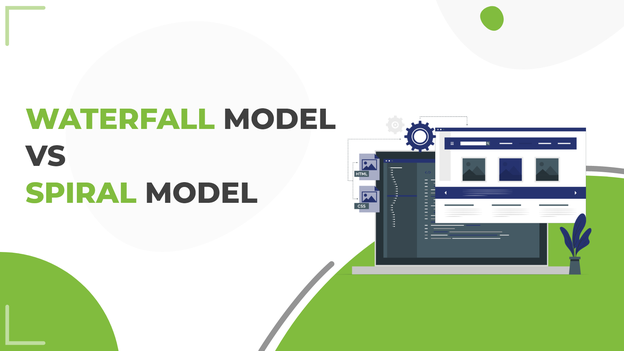Waterfall Model:-
The Waterfall Model was the first Process Model to be launched. It is also called the successive life cycle model. It is very easy to understand and use. In the waterfall model, each phase must be completed before the next phase begins and there is no overlap in stages.
The Waterfall model is the first SDLC method used in software development.
The waterfall model shows the software development process with a series of continuous flows. This means that any phase of the development process only begins when the previous phase is over.
Waterfall Model – Design
The waterfall approach was the first SDLC Model to be used extensively in Software Engineering to insure the success of the design. In the “Waterfall” method, the whole software development process is divided into different stages. In this Waterfall model, generally, the outgrowth of one phase acts as the input for the coming phase successionally.

The next stages in the Waterfall model are –
- Demand Gathering and analysis − All possible conditions of the system to be developed are captured in this phase and proved in a demand specification document.
- System Design − The demand specifications from the first phase are studied in this phase and the system design is prepared. This system design helps in specifying tackle and system conditions and helps in defining the overall system armature.
Waterfall Model – Application
- Every software developed is different and requires a suitable SDLC approach to be followed grounded on internal and external factors. Some situations where the use of the Waterfall model is most applicable are −
- Conditions are veritably well proved, clear, and fixed.
Waterfall Model – Advantages
- The advantages of cascade development are that it allows for departmentalization and control. A schedule can be set with deadlines for each stage of development and a product can go through the development process model phases one by one.
- Development moves from conception, through design, perpetration, testing, installation, and troubleshooting, and ends up with operation and conservation. Each phase of development progresses in a solid sequence.
- Some of the major advantages of the Waterfall Model are as follows −
- Simple and easy to understand and use
- Easy to manage due to the severity of the model. Each phase has specific deliverables
Spiral Model:-
The helical model is one of the most important Software Development Life Cycle models, which provides support for Threat Running. In its representation of the painting, it looks helical with many circles. The exact number of circles of the curl is unknown and can vary from design to design. Each circle of the curl is called a Phase of the software development process. The exact number of phases demanded to develop the product can be varied by the design director depending upon the design pitfalls. As the design director stoutly determines the number of phases, the design director has an important part to develop a product using the helical model.
The below diagram shows the different phases of the Spiral Model: –

The activities of the four quadrants are discussed below-
- Objects determination and identify indispensable result Conditions are gathered from the guests and the objects are linked, developed, and anatomized at the launch of every phase. Also, indispensable results possible for the phase are proposed in this quadrant.
- Identify and resolve Risks During the alternate quadrant, all the possible results are estimated to elect the most stylish possible result. Also, the pitfalls associated with that result are linked and the pitfalls
Risk Handling in Spiral Model
A threat is any adverse situation that might affect the successful completion of a software design. The most important point of the helical model is handling these unknown pitfalls after the design has started. Similar threat judgments are easier done by developing a prototype. The helical model supports managing pitfalls by furnishing the compass to make a prototype at every phase of software development.
The Prototyping Model also supports threat running, but the pitfalls must be linked fully before the launch of the development work of the design. But in real life design threats may do after the development work starts, in that case, we can not use the Prototyping Model. In each phase of the Helical Model, the features of the product are dated and anatomized, and the pitfalls at that point in time are linked and resolved through prototyping. Therefore, this model is more flexible compared to other SDLC models.
Why Spiral Model is called Meta Model?
The Helical model is called a Meta- Model because it subsumes all the other SDLC models. For illustration, a single circular helical actually represents the Iterative Waterfall Model. The helical model incorporates the accretive approach of the Classical Waterfall Model. The helical model uses the approach of the Prototyping Model by erecting a prototype at the launch of each phase in a threat-handling fashion. Also, the helical model can be considered as supporting the Evolutionary model – the duplications along the curl can be considered as evolutionary situations through which the complete system is erected.
Advantages of the Spiral Model:
Below are some of the benefits of the Spiral Model.
- Threat Handling The systems with numerous unknown pitfalls do as the development proceeds, in that case, Helical Model is the stylish development model to follow due to the threat analysis and threat handling at every phase.
- Good for large systems It’s recommended to use the Helical Model in large and complex systems.
- Inflexibility in Conditions Change requests in the Conditions at the latter phase can be
 End to End Technology Solutions
End to End Technology Solutions
